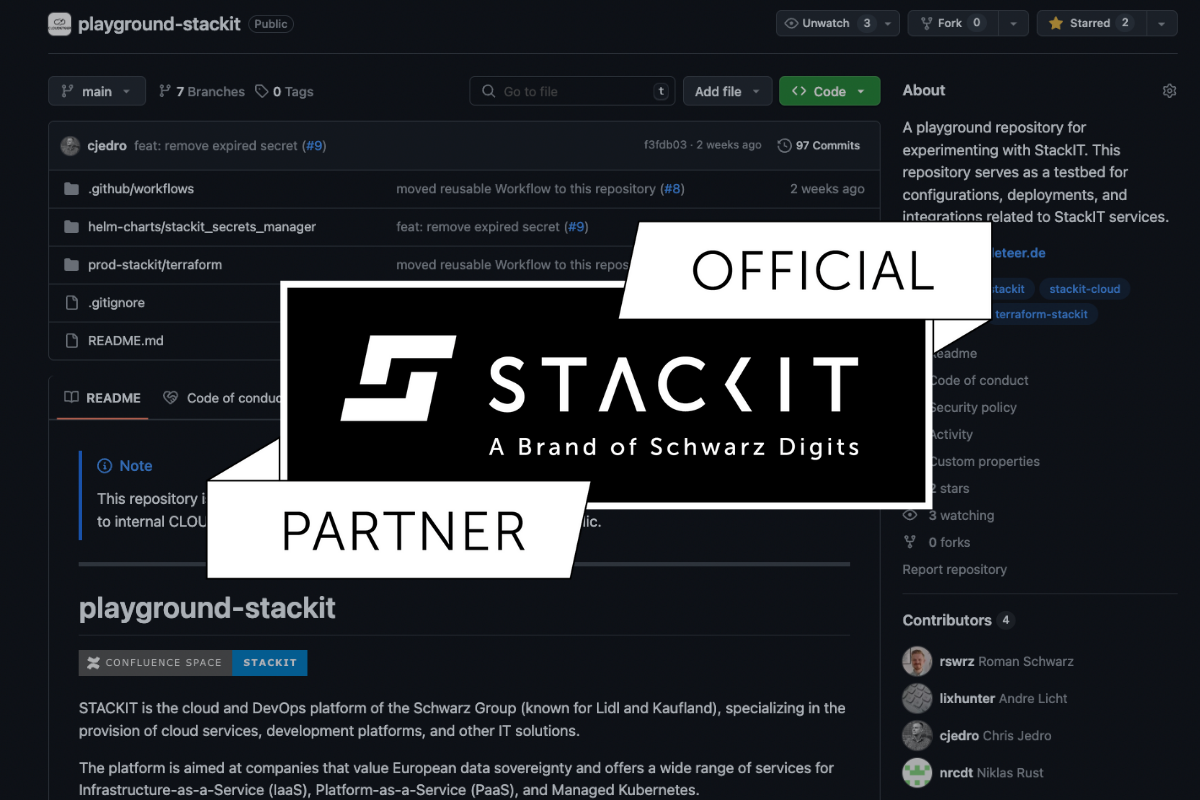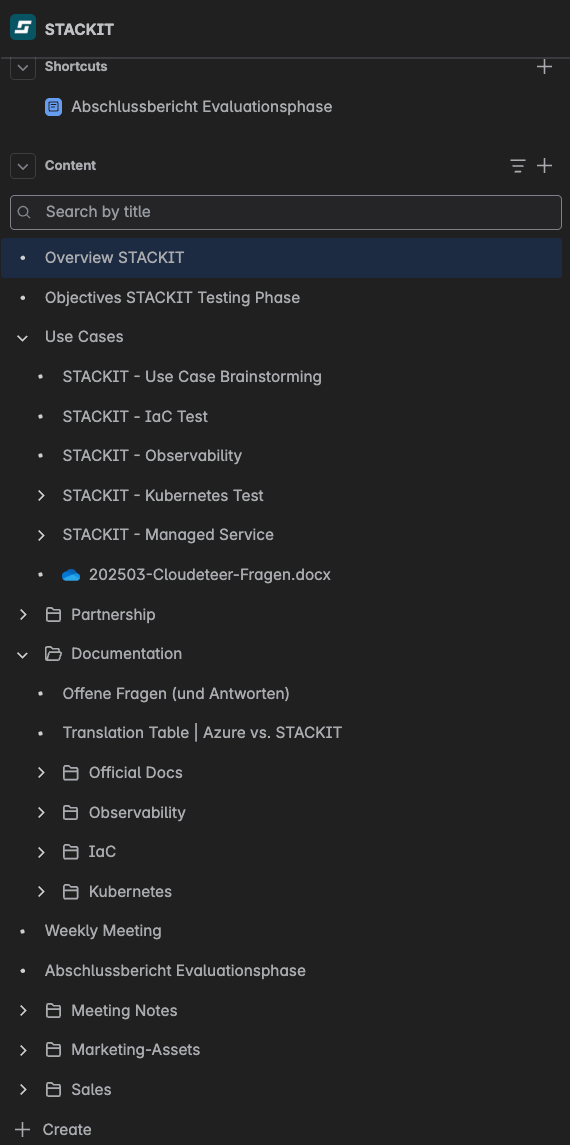
A look into our evaluation process and the case for a sovereign cloud alternative
In Europe’s growing push for digital sovereignty, one question keeps coming up: Can we build cloud infrastructure that’s both modern and independent? At CLOUDETEER, we wanted to find out.
Over the past few years, discussions about digital sovereignty have grown louder, especially across Europe. For companies handling sensitive data or operating in regulated environments, it's not just a legal concern. It’s a strategic one.
At CLOUDETEER, we’ve increasingly been asked by clients whether we could support cloud deployments that are not reliant on the large U.S.-based hyperscalers. Until recently, the honest answer was: not really. There weren’t many platforms that offered both modern tooling and a clear sovereignty model, without major compromises on usability or scalability.
That situation has changed, and STACKIT Cloud is one of the platforms driving that shift.
Filling the Gaps in Multi-Cloud Infrastructure
We continue to work with all the major cloud providers, including Azure and AWS. But over time, it became clear that some of our clients, especially those in the public sector, healthcare, or financial sectors, needed something different: a European cloud platform with a strong sovereignty model, hosted and operated in Europe, and clearly aligned with GDPR and compliance expectations. Rather than limiting ourselves to a single provider or rigid approach, we chose not to burn the ships we had built. Instead, we set sail toward a complementary solution—one that expands our capabilities and meets the sovereignty and compliance needs of more regulated industries.
So this wasn’t about replacing anything. It was about adding a viable option to the mix—something that could work alongside existing stacks in hybrid or multi-cloud setups. Because as much as “lift and shift” gets thrown around, engineers know that real infrastructure is more complex than that. Customers need flexibility to create value, not binaries.
That kicked off our internal evaluation. Is there a platform that meets these requirements and fits into our existing toolchain? One that speaks Kubernetes, respects developer workflows, and is open to contributions and feedback?
That’s when we decided to take a closer look at STACKIT Cloud.
How We Evaluated STACKIT
In March and April 2025, we ran a structured two-month evaluation of STACKIT Cloud across multiple teams. We focused on four main use cases: Managed Services, Kubernetes, Infrastructure as Code, and Observability.
We tested core functionality, assessed reliability, and explored how the platform fits into real-world engineering workflows. We evaluated which kinds of projects could be supported right away, and which ones would need workarounds or depend on features from the platform’s roadmap.
To complement our evaluation, we developed a series of proof-of-concept deployments that mirror the architectures we implement for our clients. These encompass scenarios such as provisioning infrastructure using Terraform, deploying Kubernetes clusters, setting up observability tools, leveraging STACKIT's managed services, and implementing secure secrets management. We've consolidated these configurations into our STACKIT Playground repository, which serves as a hands-on testbed for experimenting with STACKIT services. This repository not only aids our internal development but also provides the community with practical examples to explore and build upon.
Some things impressed us during these evaluations. Resource provisioning was faster than with many of the hyperscalers we know, support was responsive and helpful throughout, and overall stability was solid. STACKIT Kubernetes Engine (SKE) provided a solid starting point for container-based workloads. The Terraform integration—while still under active development and not yet at a major 1.0 release—already supports many relevant resources and continues to improve with each iteration.
That said, the platform clearly isn’t as mature as the major hyperscalers. Some features we consider standard, such as native support for RWX storage, hub-and-spoke network architectures, fine-grained access controls, or advanced monitoring integrations, are still in development or require custom solutions.

Beyond the Code
What really stood out during our evaluation wasn’t just the platform. It was the people behind it.
Over the past few months, we’ve had numerous exchanges with STACKIT engineers at events, in workshops, during technical talks, and in dedicated meetings. These weren’t superficial interactions, they led to real and honest conversations. We saw how STACKIT’s technical teams handle feedback, what they prioritize, and how fast they iterate.
We’ve already contributed feedback, opened issues, and built direct relationships with the developers. That kind of openness and responsiveness makes a big difference when you’re deciding whether to build something long-term on a growing platform.
Moving Forward with Sovereign Cloud
STACKIT isn’t a one-size-fits-all answer yet, and that’s okay. That’s not how we approach infrastructure anyway. What we are doing is offering STACKIT as part of hybrid cloud strategies. For some clients, that might mean Kubernetes on STACKIT alongside Azure services. For others, it could involve integrating specific workloads on STACKIT into existing infrastructure landscapes. We're aware that customer environments are often complex, and while simplicity is a goal, real-world architecture rarely allows for quick, clean migrations.
We've already identified several use cases where STACKIT fits well especially in scenarios with sovereignty or compliance requirements and we’re preparing to start our first client projects on the platform. We’ll share more about those use cases and our technical approaches in upcoming blog posts. Our Kubernetes chapter continues to monitor SKE’s development closely and contributes insights and feedback to support its evolution.
It’s also a clear advantage for us and especially for our customers and organizations across Europe to have another option for moving workloads to the cloud and advancing digitalization. STACKIT’s offering is technically compelling and absolutely worth considering.
And finally: a sincere thank you to the teams at STACKIT for their support throughout this process. Your openness, responsiveness, and technical clarity have made this evaluation experience incredibly productive. We’ve genuinely appreciated the opportunity to collaborate with a team that’s both grounded in reality and ambitious about what’s possible.
This collaboration reflects what we value most: tackling real-world challenges together, working with evolving platforms, and building infrastructure that’s thoughtful, flexible, and future-ready.
Direct GitHub Link: https://github.com/cloudeteer/playground-stackit

